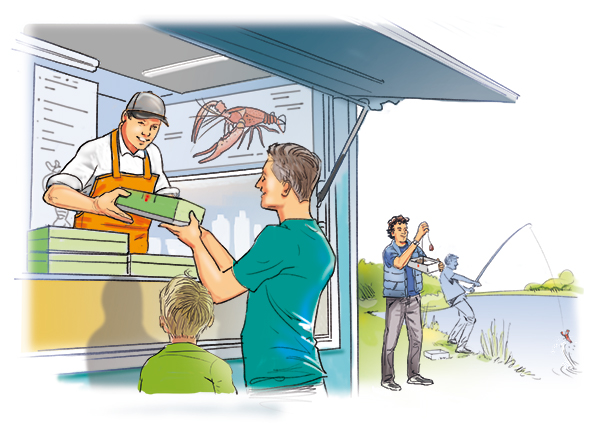Expertly communicate your solution: use visuals
Want to innovate? Visualise your thoughts!
How do you make sure stakeholders understand the importance of your insights? How do you make the right choice between possible solutions? And how can you communicate your solution clearly when presenting it to decision-makers? The answer: by making your message visual.
A spoken or written explanation is a good start, but if you want your message to stick, you’d better make it visual. Visualising is crucial when presenting an innovative solution. In fact, it’s essential in every phase of the innovation process.
Presenting insights
Every innovation process starts with insights. If you take your research seriously, you’re bound to find many interesting insights. You can describe these findings or share them verbally, but unless you’re a great storyteller the impact will be minimal. It’s likely that your audience will quickly forget at least part of the insights you shared and there is little chance that your insights will be shared among a broader group of stakeholders.
To make the insights easily shareable, make them visual. Generate a simple and clear overview of the most important data in the form of an infographic or illustration. Create icons or simple illustrations to accompany each of the important findings. This way the information will stick. People will be tempted to share the results with others who might add their own ideas, insights and little nuggets of clarifying information.
Stakeholders and experts might reach out to you, triggered by the visual you’ve shared. Speaking to these people will only broaden your understanding of the problem.

An example of insights in a visual form
Explaining ideas
Have you got a brilliant idea? Quickly make a sketch of it. It is much easier for others to grasp your idea if your explanation is accompanied by a rough visual than when it is merely scribbled on a post-it note.
Having said this, dó add a description as well. Out of context, a sketch is often not very informative. A few days after a brainstorm, few participants will remember the brilliant idea behind a rough sketch with no written explanation.

Add quick sketches to your ideas
Compare possible solutions
A good creative session will generate many hundreds, if not thousands of ideas. You’ll have to cluster these to create several directions from which you can choose the most appropriate path. Choose the direction that suits the team, organisation and situation best. Which of the possible routes is most promising? Comparing possible scenarios isn’t easy, as the different options are still very rough at this point. You can solve this by visualising each of the solution directions.
Per scenario, create a logo, a rationale (a brief description in one short paragraph) and a key visual. The key visual is an illustration in which you show the solution as it will appear once implemented. By visualising each direction, you make it a lot easier to imagine how it could work in practice. Each person who is responsible for selecting the right approach will be able to see the potential of the different options.

Visualise the different scenarios to quickly show the potential of different approaches
Presenting your concept
Once you’ve made your choice, you’ll have to develop the chosen direction further. You’ll have to create a powerful creative concept. Clearly, a written explanation is necessary to describe how this concept will solve the problem, but just text will usually not be enough to convince important stakeholders that this is the right approach. If you visualise your concept, however, it will immediately be clear how it can be used to solve the problem. Make illustrations that show what the implemented concept will look like and how it will improve the current situation.

Visualise your solution to gather support for it
Prototyping your ideas
Any idea should be tested in the field before you start pouring money into it. And if you’ve read this far, it won’t surprise you that here too visuals are very useful. There are many ways to prototype an idea, but whether you’re creating a storyboard, a fake ad or a clickable prototype for an app, visuals are your friends.
You don’t have to be an artist to make your ideas come to life
No matter in which phase of the innovation process you are, it’s always a good idea to communicate your solution visually. You don’t have to be an artist to create powerful illustrations. Simple sketches are usually enough to convince, especially in the early stages of the innovation process. Just take a look at the following video in which Dan Roam, author of The Back of the Napkin, explains how to draw anything:
Step up your game:
Would you like to know more about visualising ideas and concepts? Then our in-company training Prototyping & Validation is just the thing for you. In this training, you and your colleagues learn how to quickly test assumptions, but also how to quickly make any idea tangible and/or visible. It goes without saying that we also offer this training virtually.





